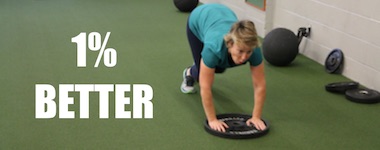 Cardiovascular training is exercise with the purpose of developing cardiovascular or aerobic fitness. Cardiovascular fitness is a good measure of the heart’s ability to pump oxygen-rich blood to the muscles.
Cardiovascular training is exercise with the purpose of developing cardiovascular or aerobic fitness. Cardiovascular fitness is a good measure of the heart’s ability to pump oxygen-rich blood to the muscles.
Cardiovascular training generally involves exercising at a constant moderate level of intensity, for a specified duration, during which the cardiovascular system is allowed to replenish oxygen to working muscles. Typical activities include walking, jogging, cycling, swimming, jump rope, stair climbing and rowing.
Why is cardiovascular training so important?
It plays a vital role in human health and performance. With regular cardiovascular training, one can expect numerous metabolic changes.
These include:
Increased cardiac output
Increased oxygen uptake
Increased blood flow to active muscles
Decreased sub-maximal respiratory rate
Increased blood volume
Improved thermo-regulation
Increased mitochondrial size and density
Increased oxidative enzyme concentrations
Increased capillarization in muscle bed
Lower rate of all-cause mortality
Lower rate of cardiovascular disease
Lower incidence of type 2 diabetes
Lower rate of total body fat
Lower rate of colon cancer
Lower rate of breast cancer
Lower rate of osteoporosis
Introducing just a small amount of regular cardio training can greatly improve overall health, but if your goal is FAT LOSS we need to be really specific with your cardiovascular training.
Many clients we work with will ask question about cardio such as:
“How much cardio should I be doing?”
“When’s the best time to do my cardio?”
“I want to get leaner — should I do more cardio or more weights?”
“I hate cardio. Do I need to do hours and hours to achieve my goals?”
Based on all these questions about cardiovascular training, it showed us that we are a little confused on how to use this tool to reach a specific goal. Most people are pretty clear about what they are doing and why, but is seems to be that they are using cardio inappropriately.
Before we get into how to use cardio more appropriately and how it can have detrimental effect on the fat loss journey we will take a look at the different types of cardio and the energy systems used.
All cardio is not created equal. In order to understand why and how cardio types can differ, you have to have a basic understanding of the body’s three energy systems:
- Anaerobic-alactic
- Anaerobic-lactic
- Aerobic
The main difference between energy systems is the duration, intensity of the exercise and the type of energy source the body uses to fuel the activity.
What many people describe as “cardio” — long-duration, relatively lower intensity movement — works the third system, the aerobic energy system.
Now, there’s a place for this in training, especially if you’re an endurance athlete, or looking for some active recovery — or even just a nice way to unwind with a pleasant jog outside in the fresh air.
But despite what the “aerobics” craze of the 1980s told us, aerobic activity is not necessarily always the best choice for fat loss, athletic performance, or body composition.
We like to use anaerobic training for our programming at Transformation Fitness and Wellness and if FAT LOSS is your goal it is a must.
Anaerobic means without oxygen and it is the energy system that uses glycogen as a fuel source. For this blog we will not get into the specifics of the anaerobic system, but we will hit on some of the benefits of using it as a training tool.
Using anaerobic training can produce the following benefits:
- Reduction of body fat (while retaining lean body mass!!!)
- Strengthening the cardiovascular system
- Developing sport-specific energy systems (e.g. training for that Olympic hockey team)
- Developing “work capacity” (i.e. the ability to tolerate a high level of intensity for a longer period)
- Improving fat and carbohydrate oxidation in skeletal muscle
- Developing “mental toughness”
- Challenging the fast twitch muscle fibers — the fibers that are great for strength, power and looking toned
Most people do not like training the anaerobic system based on the high intensity component. When training the anaerobic system you will want to use intensities that can be up to 90% of your vo2max and most of the time people are not discipline enough to perform a workout at this intensity. Plus it can feel pretty uncomfortable.
With anaerobic training or many people label it high intensity training, you will get a bigger training effect with less time spent. You will also produce a better hormonal response for fat loss and overall conditioning.
Here’s a brief review…
- A small amount of cardio is okay if you enjoy it, but it’s really not necessary for fat loss.
- At its worst, excess cardio “eats” lean muscle and creates a destructive pattern of slow metabolic rate and a yo-yo’ing body weight.
- Excess cardio leads to muscle loss which inhibits natural hormone production.
- Aerobic workouts also elevate cortisol levels.
- Strength training raises the metabolic rate for longer periods of time than aerobic work.
- Walking has many of the benefits and none of the drawbacks of traditional cardio. With the right diet and weight training, walking is all you need to lose fat.
- Using anaerobic or high intensity training is the best use of time and energy systems for fat loss.
- Resistance training is a must if you want to drop body fat and improve overall health.
We hope this information helps guide you with your fat loss journey and remember you must use cardio more specific if you want to obtain specific goals. Also, the number one competent in a fat loss journey is linked back to NUTRITION. If you do not have your nutrition dialed in you will not hit your specific fat loss goals. If you need more guidance with your workouts and nutrition please take a few minutes and request a consult today.
[us_cta title=”Want help with FAT LOSS?” message=”Call Us (317) 927-9689 or Fill Out Quick Consultation Form” button_target=”” color=”primary” btn_label=”Click Here” btn_color=”light” btn_style=”raised” btn_link=”url:%2Fconsultation”]



Leave a Reply